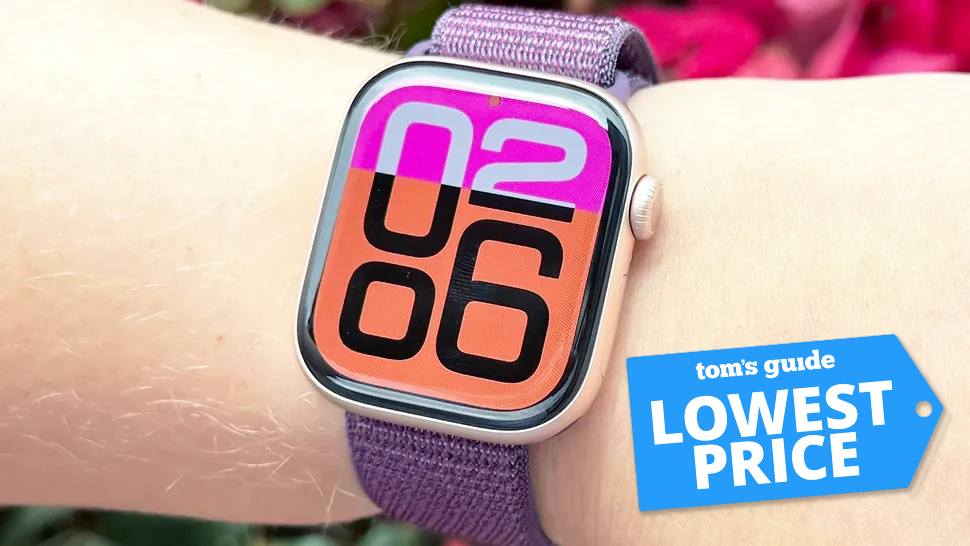Tom's Guide Verdict
While the JLab Epic Air ANC offers an affordable route into noise-cancelling wireless earbuds, underwhelming performance and an unreliable app mean you’re better off looking elsewhere.
Pros
- +
ANC on a budget
- +
Great battery life
- +
Decent sound quality with the right settings
Cons
- -
Bulky design
- -
App is frustrating to use
- -
ANC not that effective
Why you can trust Tom's Guide
Colors: Black
Battery life (rated): 8 hours with ANC on (32 hours with charging case), 12 hours with ANC off (48 hours with charging case)
Size: 1.4 x 1.1 x 0.9 inches (per bud); 2.3 x 1.5 x 2.2 inches (charging case)
Weight: 0.25 ounces (per bud); 1.98 ounces (charging case)
Connectivity: Bluetooth 5.0
The JLab Epic Air ANC has all the immediate markings of a great deal: a true wireless earbud design, long battery life active noise-cancelling (ANC), all for a mere $99.
It’s not alone in this regard, coming hot on the heels of the $130 Anker Soundcore Liberty Air 2 Pro and its own sporty cousin, the JLab Epic Air Sport ANC. This is a very exciting arena to finally see some competition: many of the best wireless earbuds include ANC but are towards the pricier end of the spectrum; the $249 AirPods Pro being a prime example.
As you’ll see in this JLab Epic Air ANC review, taking the low-budget route doesn’t mean having to give up on certain features, but then this particular set of buds comes with a number of caveats that just leaves them outside the best cheap noise-cancelling headphones you can buy.
JLab Epic Air ANC review: Price and availability
The JLab Epic Air ANC is $99 direct from JLab; if you can spare 99 cents more you can buy from Best Buy or Target instead.
The current best price we’ve seen is $93.47 from Amazon. This may be a small and apparently temporary saving, but even at full price the Epic Air ANC is seriously cheap for a set of noise-cancelling, true wireless earbuds.
JLab Epic Air ANC review: Design
Aesthetically, the design of the JLab Epic Air ANC somewhat gives away that this is a relatively cheap pair of ANC earbuds. The plastic has a basic matte finish and while it’s handy to have such large sensors for the touch controls — in the form of a circular JLab logo — the buds themselves look gigantic. They stick out the ear noticeably further than the $130 Anker Soundcore Liberty Air 2 Pro, even if the stalks aren’t as long.
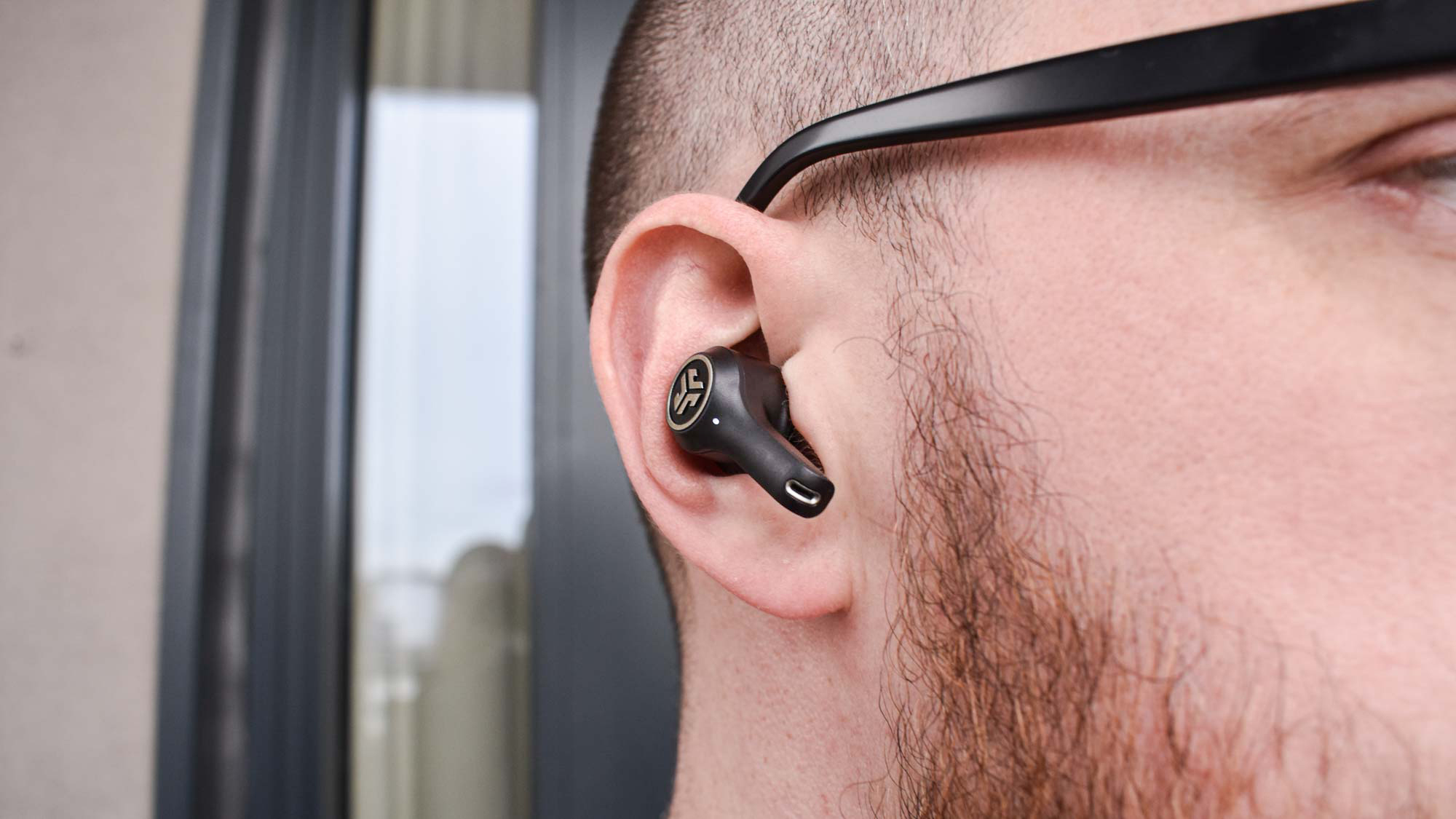
While not a particularly good-looking pair of earbuds, the Epic Air ANC at least does well on marrying design and function. Both earbuds include their own status LED to help confirm pairing, and because the JLab logos on the sensors are slightly raised, they provide a little extra tactile feedback to let you know you’re tapping in the right spot.
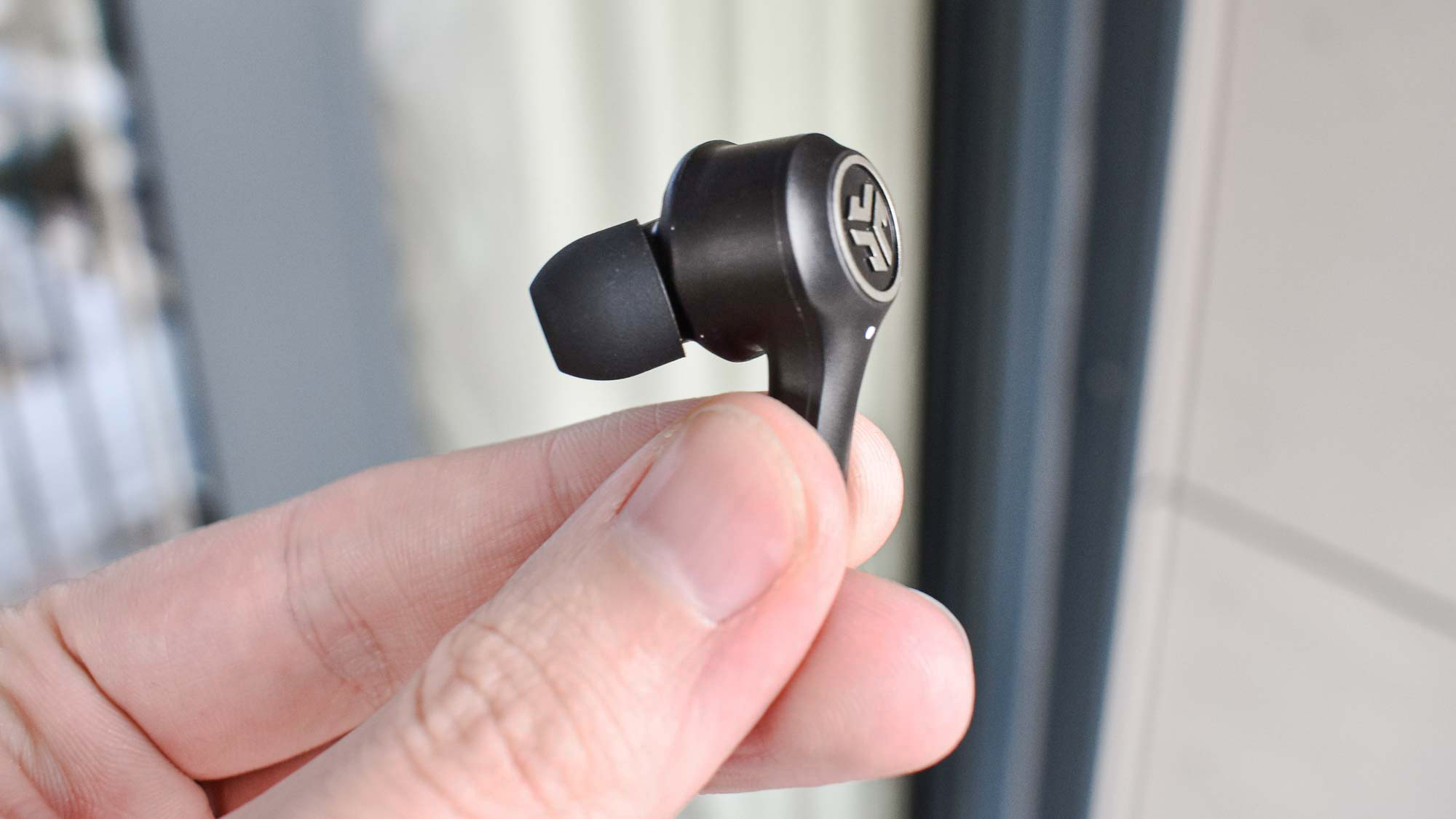
The charging case, unfortunately, feels the effect of the earbuds’ bulkiness by being on the larger side itself. Even so, the leatherette finish is nice for the money, and again, integrated LEDs convey helpful details: battery charge status, in this instance.
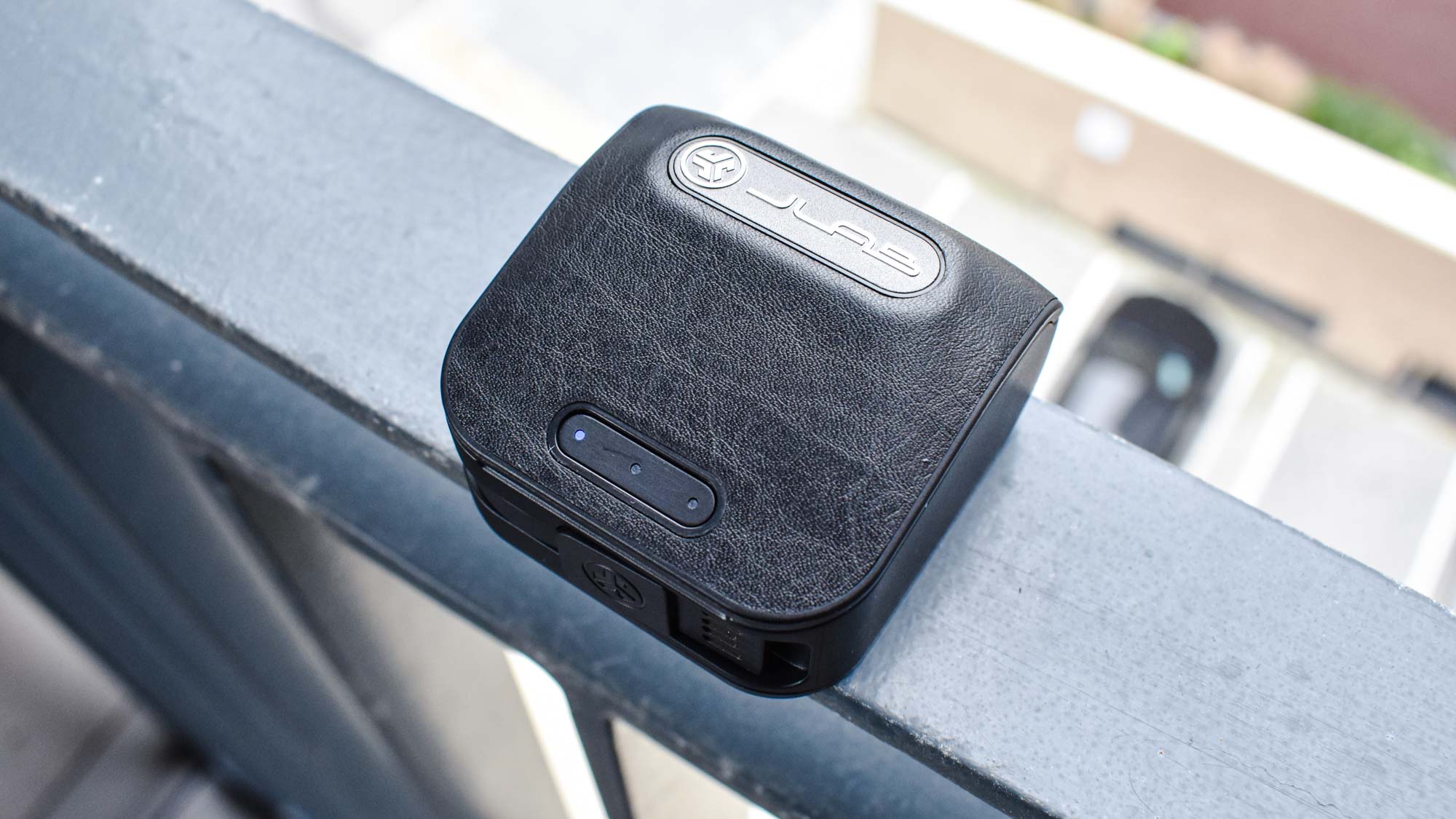
The case also features a hardwired USB cable that slots into the front. I appreciate the neatness of this stowing method, though be warned that the cable is very short: not even 3 inches. You may wish to use a Qi wireless charger instead, which to JLab’s credit, the Epic Air ANC case supports.
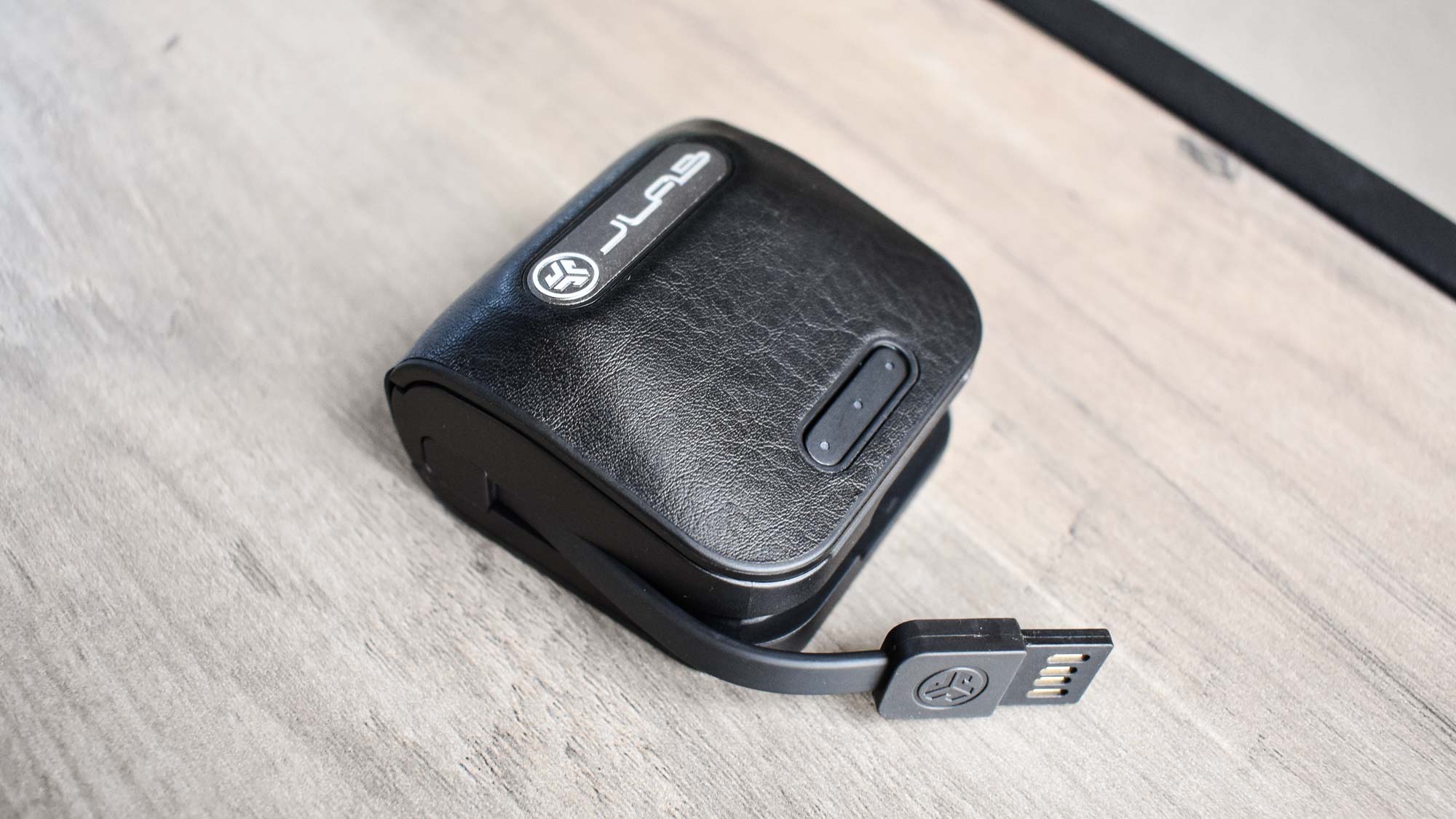
The buds (though not the case) are IP55-certified, which means they’re sweat-proof and dust-resistant. You could even let them get drenched in the rain, though you shouldn’t take them into the shower or let me be fully submerged in water for any amount of time.
JLab Epic Air ANC review: Comfort and fit
You get a healthy six pairs of swappable tips in the box. That includes three standard silicone tip sizes (small, medium and large), and the medium and large sizes also have extra-long versions for deeper ears. The last set is a single pair of “Cloud foam” tips, which are medium-sized. I would have liked a smaller foam option, though, as medium wouldn’t fit in my ears.
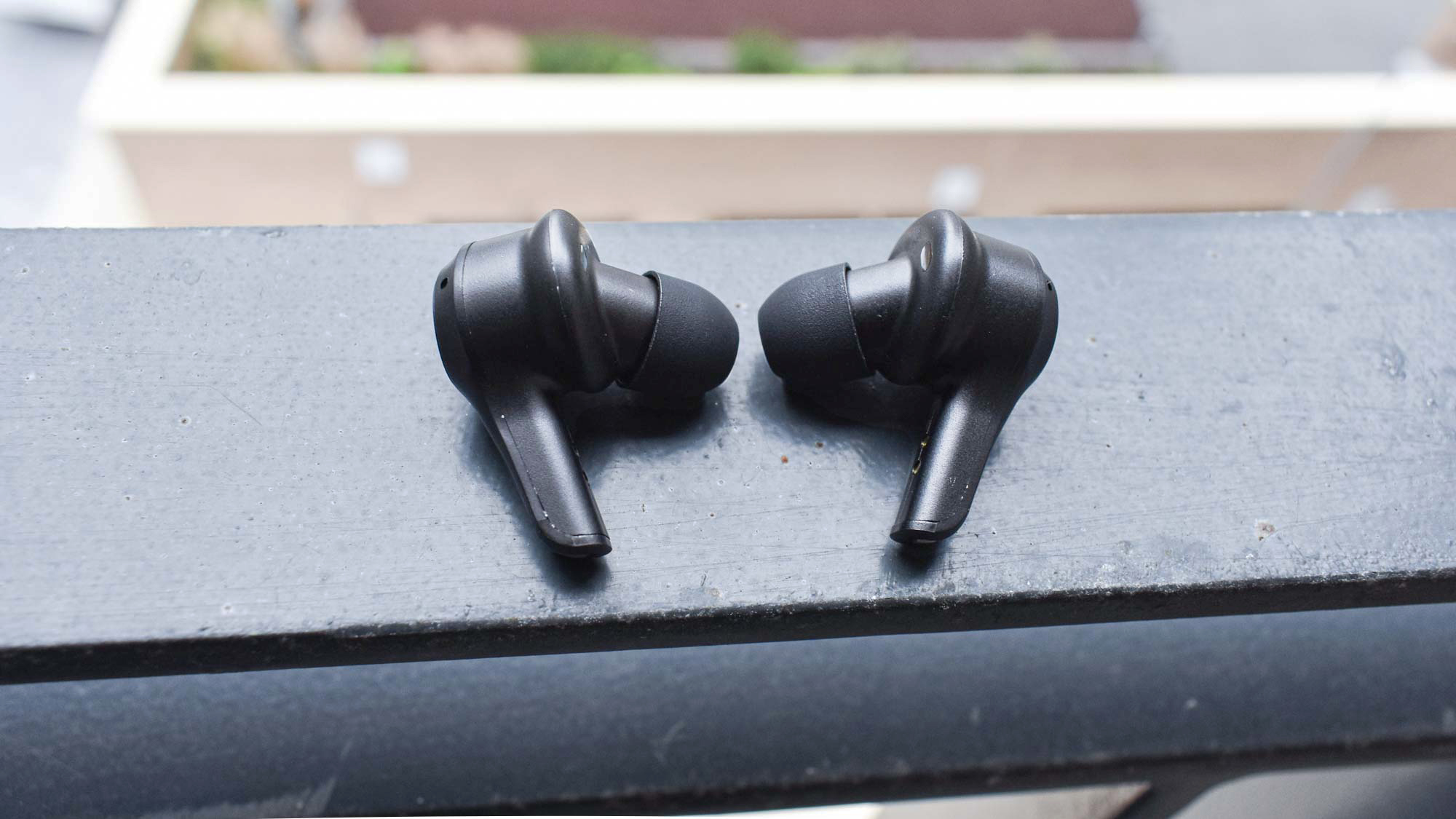
Still, with the correct sized tips, the JLab Epic Air ANC are both secure and reasonably comfortable. They don’t feel as fatiguing after a couple of hours as the Soundcore Liberty Air 2 Pro did, even though JLab’s buds are very slightly heavier: 0.25 ounces per bud compared to 0.22 ounces.
JLab Epic Air ANC review: Setup
The JLab Epic Air ANC pairs nice and quickly. The first time, you just need to hold down on the touch sensors for a few seconds to activate pairing mode, then find the JLab Epic Air ANC on your device’s Bluetooth list. After that, it’s simply a matter of removing the buds from the case to automatically re-pair them.
This all works well, as does the Bluetooth 5.0 connection in general, which holds strong over distances and through multiple walls.
JLab Epic Air ANC review: Controls
The aforementioned touch controls are reliable enough. I had a couple of occasions when some particularly light taps weren’t registered, but as long as you’re decisive then it’s easy to raise or lower the volume, activate a voice assistant or cycle through sound and ANC profiles (more on these later) with simple tap and hold gestures.
There’s also a JLab ANC mobile app (Android and iOS), but sadly this is one of the most frustrating companion apps I’ve ever used with an audio product.

First off, it doesn’t always launch properly. There’s typically a “Loading” prompt whenever you open it, but sometimes this merely loops forever, forcing you to close the app and start again. This thankfully wasn’t an issue for Alex when he tested the Epic Air Sport ANC, and I only used the Android version, so the iOS version might not have this issue. Still, even if I just got unlucky, it was an irritating problem to deal with.
Then there’s the noise-cancelling and Be Aware controls. Yes, the JLab Epic Air ANC supports both ANC and an ambient mode, which for $99 is great, but the way it’s set up here has the potential to be pretty confusing. Typically you might be using the touch controls to switch between the ANC on, ANC off and Be Aware (ambient) modes, but if you open up the app there are slider controls for both ANC and Be Aware.
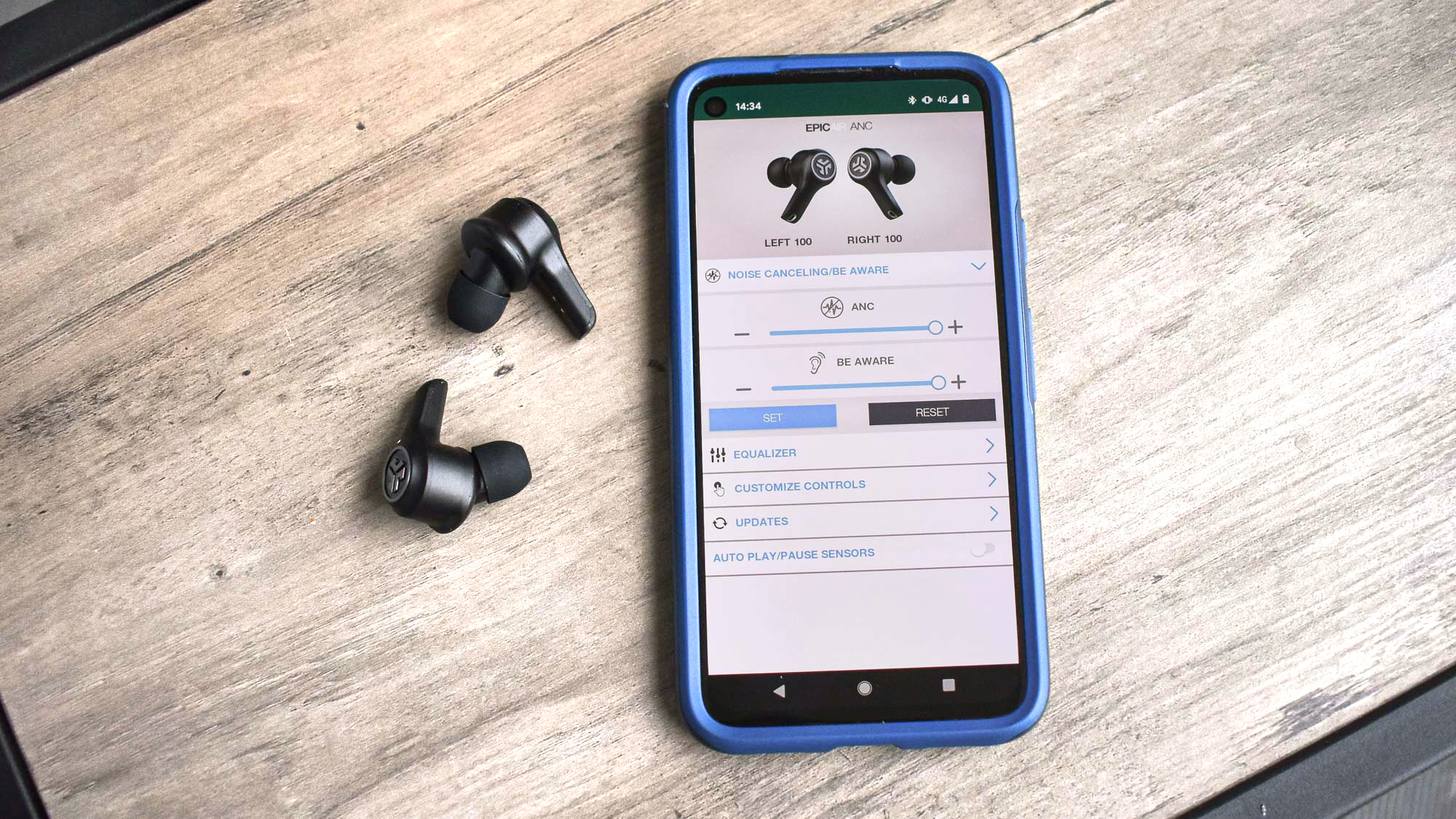
This isn’t explained anywhere, but the sliders only have an effect when the corresponding mode is in use, so I can absolutely see baffled users dragging the sliders back and forth, wondering why they can raise the volume of Be Aware’s microphone recording while still in noise-cancelling mode. Or vice-versa.
JLab Epic Air ANC review: Sound quality
Weirdly, you also can’t use the app to switch between sound profiles, though at least this can be done with the touch controls. The Balanced EQ profile is indeed evenly balanced, in the sense that there’s no single overbearing frequency range, though also sound a bit flat: the snare drum hits in AViVA’s “GRRRLS”, for instance, lacked a certain sharpness.
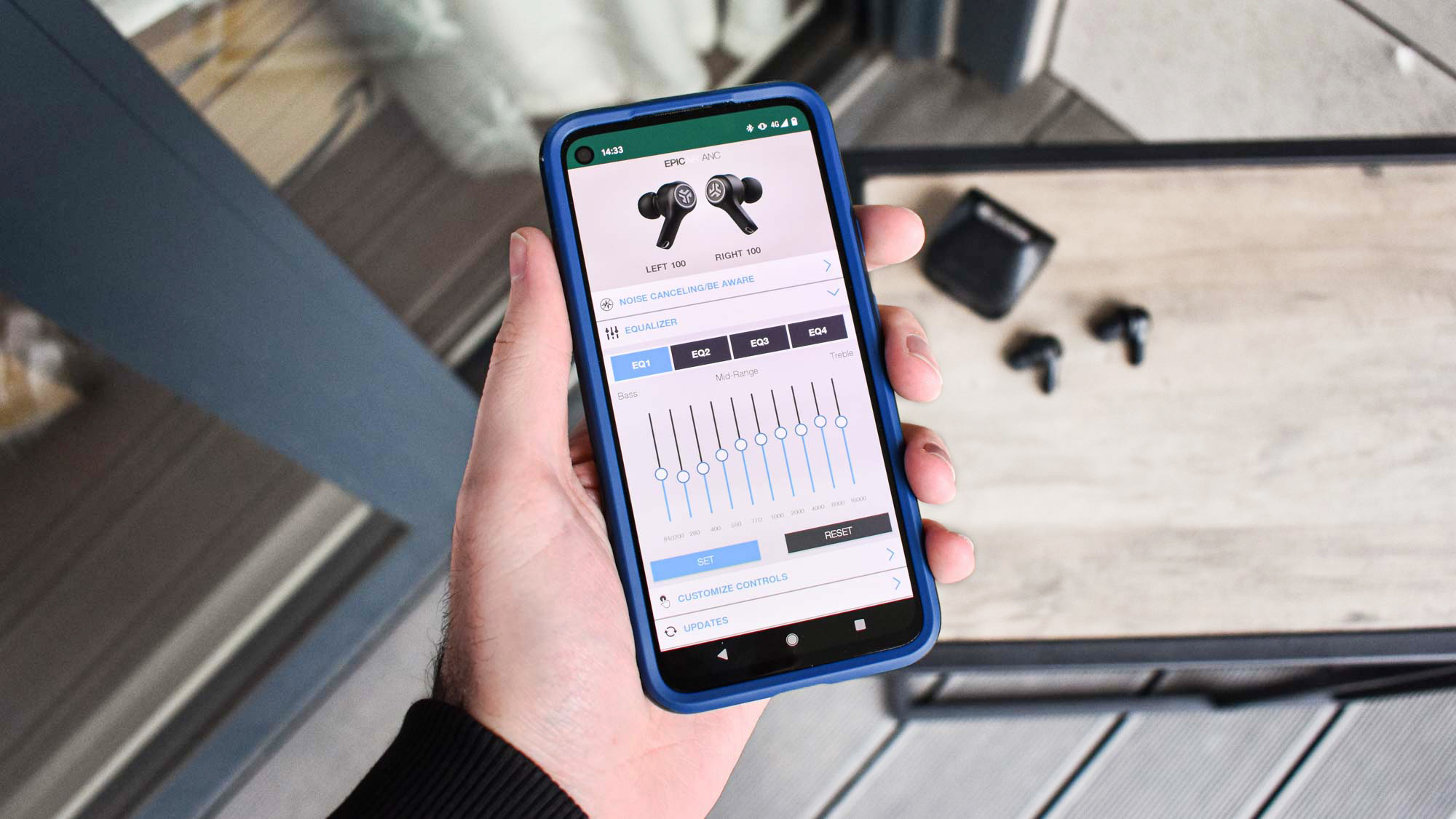
The Bass Boost profile is just too boomy, period, so it’s up to JLab Signature profile to save the day. The manual says this amplifies vocals and bass, which sounds like it could just introduce two different types of imbalances, but I enjoyed what I heard. Pretty much every vocal-led song benefits from it over the Balanced mode, and the extra low end creates a greater sense of overall depth. This was especially noticeable in tracks with sharp bass/treble contrasts, like “Dani California” by Red Hot Chili Peppers.
Sadly these profiles bring up yet another point of confusion with the app. You can set up to four additional custom EQ profiles, which is great, but these will override the JLab Signature, Bass Boost and Balanced profiles if you’re already using them; it would make more sense to automatically switch to the fourth profile, named Custom, before your tinkering takes effect. To get the original sound profile back as it was, you’ll need to cycle back through to it again.
JLab Epic Air ANC review: Active noise cancellation
The ANC is not great. In fact it’s not even particularly good: it relies heavily on the natural, passive noise isolation of the silicone tips, which in fairness is fine. But the electronic aspect does very little to silence office noises like the click-clack of typing or the rolling of chairs, and is even less effective outdoors. I could easily hear nearby cars and buses pass by; even the rush of wind noise competed to overpower my music.
Engaging the Be Aware transparency mode made this wind noise even worse. And a lot of sounds, including speech, can be tinged with a harsh, snappy electronic effect when it’s switched on.
To be fair, ambient mode does make it a lot easier to hear both your own voice and that of whoever you’re speaking to, so it does the job in a basic sense. But on the whole, both noise-cancelling and transparency are executed with much more finesse by the Soundcore Liberty Air 2 Pro.
JLab Epic Air ANC review: Features
The good news is that the JLab Epic Air ANC has a few other toys. There’s Siri and Google Assistant support, for one. Activating the latter with touch controls, the earbuds dutifully and ably recorded my voice commands for the Assistant to execute on my phone.
There’s also a dedicated Movie Mode, which supposedly reduces latency. In truth I never noticed video audio going out of sync without this mode engaged, but it’s easy enough to enable or disable that you might as well use it: just hold down both touch sensors for three seconds.
One of the app’s redeeming features is the ability to customise the touch controls. There’s an in commendable depth to this: as with the more expensive Sennheiser CX 400BT, there are plenty of gestures and plenty of functions to mix and match them with, so you can build a control scheme that feels the most intuitive and tactile to you. As frustrating as the app can be, it’s worth using for this feature alone.
Lastly, you get three months’ free subscription to Tidal, a nice bonus for such a cheap pair of buds.
JLab Epic Air ANC review: Battery life
This is where the JLab Epic Air ANC finally gets to stand out on something other than price. With ANC on and volume at 50%, we got an outstanding 8 hours and 46 minutes of continuous music playback — a result that leaves the the Soundcore Liberty Air 2 Pro in the dust, as it even does the ultra-premium AirPods Pro and the Samsung Galaxy Buds Pro. Neither of these could break 5 hours with ANC enabled.
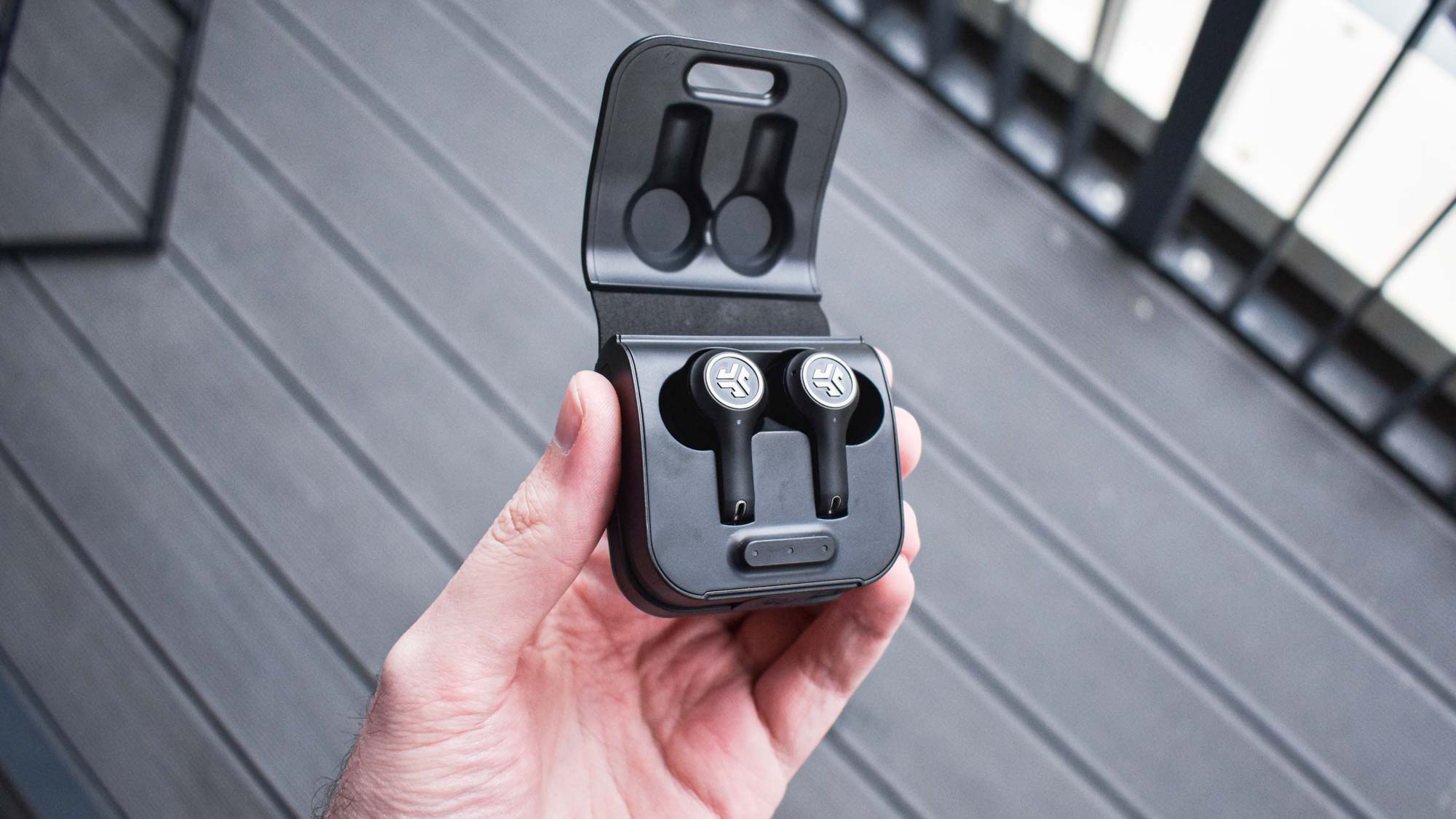
And, as the charging case is good for three additional refills, you’re looking at around 35 hours of ANC playback in total. That’s preposterously good.
This result tracks with JLab’s own numbers, which quote “32 plus hours” of total ANC playback. Turn noise-cancelling off and this could stretch up to “48 plus hours,” or 12 hours between charges.
Fast-charging performance is decent too: after 15 minutes charging from empty, the JLab Epic Air ANC could keep going for 2 hours and 10 minutes.
JLab Epic Air ANC review: Call quality
Using the JLab Epic Air ANC made phone calls clearer on my end, but the friend I called reported that voice clarity dropped “substantially” after I switched from my phone to the earbuds. I apparently sounded less organic and more distorted, albeit not enough to cause outright problems.
This is another shame, as JLab Epic Air ANC can use one of each bud’s onboard mics to cancel out a degree of ambient noise; this effort clearly shows there was a desire to make the clarity of voice calls a strong suit. It just hasn’t entirely worked out.
JLab Epic Air ANC: Verdict
It’s hard not to admire the ambition of the JLab Epic Air ANC. True wireless ANC earbuds for $99 is a big ask, not to mention features like custom touch controls, water resistance and and one of the best battery performances you’ll see from any recent pair of noise-cancelling buds.
Unfortunately, it’s the ANC itself that tops the disappointment list. It’s just not as effective as the Anker Soundcore Liberty Air 2 Pro. These rival earbuds aren’t perfect either, but only cost $30 more, while delivering better noise-cancelling, higher sound quality in general and an app that doesn’t stop to wonder if it should work every time you open it.
Unless you value battery life over everything else, the choice is obvious: the JLab Epic Air ANC is a decent pair of cheap noise-cancelling earbuds, but the Anker Soundcore Liberty Air 2 Pro is the better buy.
James is currently Hardware Editor at Rock Paper Shotgun, but before that was Audio Editor at Tom’s Guide, where he covered headphones, speakers, soundbars and anything else that intentionally makes noise. A PC enthusiast, he also wrote computing and gaming news for TG, usually relating to how hard it is to find graphics card stock.


